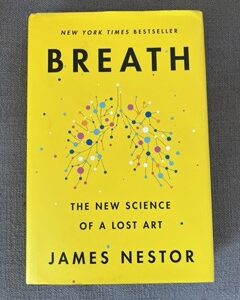EMDR (Eye Movement Desensitization and Reprocessing) is a technique used to facilitate processing of traumatic memories. Uri Bergman, Ph.D. presented at the EMDRIA Conferences on the Neurobiology of EMDR. This is extracted from the final paragraph in his paper:
“In summary, the mechanisms that underlie EMDR appear to be extremely complex and multi-varied. We can, however, begin to speculate on the following: that EMDR stimulation (visual, auditory and tactile), with its constant alternating shifting of attention, facilitates a cholinergic surge, which jump-starts the REM sleep system, activating areas of the anterior cingulate, as a filter, thereby facilitating the integration of traumatic memory into general semantic networks. This integration leads to a reduction in strength of both hippocampally mediated episodic memories of the traumatic event as well as the amygdaloid mediated negative affect of PTSD. (Stickgold, 1989b); and the EMDR stimulation (visual, auditory and tactile), also constitutes a constant and marked stimulation of the cerebellum. This allows the cerebellum to act as another association area and information processing center, facilitating, through its extensive input and output fibers, outgoing and incoming information to the limbic area, directly activating areas in the dorsolateral cortex; further facilitating the integration of traumatic memory into general semantic and other neocortical networks.”
During traumatic experiences, the brain is unable to process events in a way that is similar to regular everyday situations. Usually during the night, while in an REM sleep state, the day is processed and stored away in the brain. Traumatic memories are unable to be processed and remain stuck and stored in the amygdale and hippocampus. EMDR stimulation causes the nervous system to move into a state almost identical to REM and the traumatic memories are then able to be processed. EMDR is reported to achieve success during treatment when used for:
PTSD/trauma, panic attacks, anxiety, grief, disturbing memories, phobias, pain disorders, eating disorders, performance anxiety, stress reduction, addictions, sexual and/or physical abuse, and body image disorders.
This list is not complete. Please contact us to discuss specific questions you may have about EMDR. See the official EMDR website at www.emdria.org for questions and more information on this therapeutic approach and check out the 8 phases of treatment to learn more about your EMDR sessions.
EMDR Resources
- EMDR and Migraines
- The Power if EMDR
- The Evidence on EMDR (New York Times Article with Francine Shapiro)
- Obsessive Compulsive Disorder and Emdr Treatment
- EMDR And The Treatment Of Traumatized Children and Youth
- EMDR Book Resources
- EMDR: Research Findings






